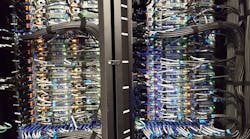Virtualization Helps IT Leaders Future-Proof Their Infrastructure
This week, we conclude our special report series exploring how high-speed fiber networks can future-proof distributed data centers by exploring cost and network topology – and how virtualization can help IT leaders when future-proofing their infrastructure.
Get the full report
With the pace of change only likely to quicken in the future, IT leaders should begin thinking now about how they can future-proof their infrastructure. Here are some of additional factors they should take into account.
Cost
Cloud computing services have increased the latitude customers have in budgeting and cost allocation, but they have also introduced new expenses that aren’t always apparent and that can add up over time. For example, egress fees, which charge for data taken out of public cloud storage, can be substantial when large data sets are involved. A 150 TB file transfer from a cloud platform costs an average of $1,000 in egress fees alone, and large enterprises typically move many times that amount on a typical day.
Software-as-a-service provides an abundance of choice, but it is up to their customers to watch for collateral costs created by unused or underused accounts as well as security risks like data exfiltration and configuration errors that leave data exposed. Ninety percent of respondents to a recent McAfee report said their organizations had experienced some security issues with cloud infrastructure, mostly attributable to user error.
People costs are usually the largest single line item in a CIO’s budget and administering networks of distributed data processing equipment can require a lot of people. With data center operators already facing desperate skills shortages, automation should be applied wherever possible. Virtualizing infrastructure lays the foundation for automation and is now applicable across servers, storage, networks, desktops, and data. Moving to software-defined infrastructure insulates IT organizations against equipment obsolescence and can significantly reduce staffing needs.
Network topology
The distributed, heterogeneous enterprise IT landscape in the future will require far more robust and automated networking capabilities than were used in the past. Legacy networks were designed for static workflows. However, today’s business climate is dynamic and mobile, subject to sudden spikes in activity and often unpredictable traffic patterns. New technologies like robotics, virtual and augmented reality, video streaming, and real-time equipment monitoring will also require organizations to allocate plentiful bandwidth to meet latency demands.
IT leaders should look to fiber networks constructed from a mesh fabric to give them maximum flexibility and automation. A mesh network links devices together through other branches or nodes. They are optimized for routing data efficiently between devices and clients, enabling organizations to maintain consistent connections with a minimum of vulnerability to disruption or unexpected changes in traffic flows.
New Ethernet fabrics based upon industry-standard protocols such as Shortest Path Bridging (SPB) and Transparent Interconnection of Lots of Links (Trill) enable all links in a network to be active with multiple equal-cost paths. This improves performance to optimize routing while permitting the network to quickly repair itself and route around outages.
Perhaps more importantly, fabric networks lay the foundation for software-defined networking (SDN) and network functions virtualization (NFV). SDN uses virtualization to improve flexibility and management by abstracting the control plane from the data forwarding functions in network devices. Essentially, all devices can be treated as a single pool and capacity allocated dynamically depending upon the needs of applications. This enables centralized management, control, automation, and policy enforcement across both physical and virtual networks.
NFV applies to services commonly provided by dedicated hardware such as routers, firewalls, and load balancers. It enables those important functions to be deployed at a lower cost on commodity hardware and managed centrally. In most cases, there is no need for on-site troubleshooting, which reduces travel and personnel costs and enables faster setup and remediation.
Virtualized networks also support multiple physical topologies and can be constructed incrementally over time.
Download the full report, Future-Proofing the Distributed Data Center with High-Speed Fiber Networks, courtesy of Belden, for exclusive content on why fiber-optic cables and connectors are the best way to future-proof network infrastructure.


